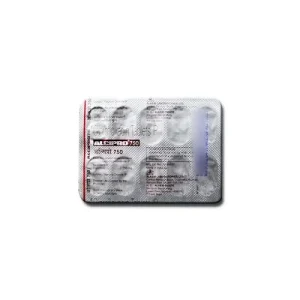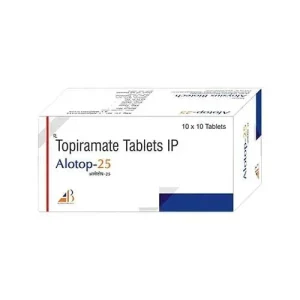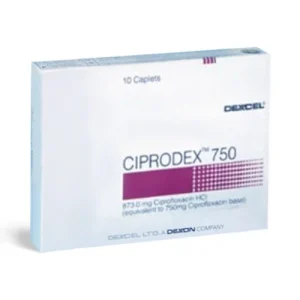Sorry, nothing in cart.
Anticonvulsants
Anticonvulsants: Uses, Types, and Side Effects
Anticonvulsants, also known as antiepileptic drugs (AEDs), are medications used to control seizures in people with epilepsy and other conditions that cause seizures. They play a critical role in stabilizing brain activity and preventing abnormal electrical signals that lead to convulsions or seizures. This comprehensive guide covers everything you need to know about anticonvulsants—their uses, types, common side effects, and more.
What Are Anticonvulsants?
Anticonvulsants are a class of medications that prevent or reduce the frequency and severity of seizures. They work by calming abnormal electrical activity in the brain, which can cause various types of seizures, from mild to severe. While anticonvulsants are primarily prescribed for epilepsy, they can also be used for other medical conditions, including:
- Bipolar disorder
- Neuropathic pain
- Migraines
- Anxiety disorders
- Fibromyalgia
These drugs help maintain brain stability and reduce the risk of seizures, allowing patients to live more normal, active lives.
How Do Anticonvulsants Work?
The brain uses electrical impulses to communicate between neurons. Seizures occur when abnormal bursts of electrical activity disrupt these communications. Anticonvulsants work by targeting these abnormal electrical discharges, either by blocking specific channels in the brain’s neurons or by increasing the action of gamma-aminobutyric acid (GABA), a neurotransmitter that inhibits excessive neural activity.
Different anticonvulsants affect the brain in various ways, depending on the type of seizure and the patient’s specific condition.
Common Types of Anticonvulsants
There are numerous anticonvulsants available, each with different mechanisms of action. Below are some of the most common types:
1. Carbamazepine
- Uses: Primarily for partial seizures and generalized tonic-clonic seizures.
- Brand Names: Tegretol, Carbatrol.
- How It Works: Blocks sodium channels to reduce abnormal electrical activity in the brain.
2. Valproate (Valproic Acid)
- Uses: Effective for a wide range of seizures, including absence seizures and generalized seizures.
- Brand Names: Depakote, Depakene.
- How It Works: Increases the amount of GABA to calm neural activity.
3. Lamotrigine
- Uses: Treats partial seizures, generalized seizures, and Lennox-Gastaut syndrome.
- Brand Names: Lamictal.
- How It Works: Stabilizes neuronal membranes by inhibiting sodium channels.
4. Levetiracetam
- Uses: Controls partial seizures and generalized seizures in people with epilepsy.
- Brand Names: Keppra.
- How It Works: The exact mechanism is unknown, but it is thought to influence synaptic transmission and reduce abnormal activity.
5. Gabapentin
- Uses: Neuropathic pain, partial seizures, and off-label for anxiety disorders.
- Brand Names: Neurontin.
- How It Works: Modifies the release of neurotransmitters that cause seizures.
6. Phenytoin
- Uses: Controls generalized tonic-clonic seizures and partial seizures.
- Brand Names: Dilantin.
- How It Works: Slows down nerve impulses in the brain that cause seizures.
7. Topiramate
- Uses: Treats partial-onset seizures, generalized seizures, and migraines.
- Brand Names: Topamax.
- How It Works: Blocks sodium channels and enhances the action of GABA to reduce excessive neuronal firing.
Uses of Anticonvulsants
While epilepsy remains the primary condition treated with anticonvulsants, these medications are also used for various other conditions. Here’s a closer look:
1. Epilepsy
- Anticonvulsants are prescribed to control seizures in people with epilepsy. The type of medication chosen often depends on the type of seizure the patient experiences, such as partial, generalized, or absence seizures.
2. Bipolar Disorder
- Some anticonvulsants, such as valproate and lamotrigine, are used as mood stabilizers in people with bipolar disorder. These medications help prevent mood swings and stabilize the brain’s electrical activity.
3. Neuropathic Pain
- Gabapentin and pregabalin are commonly prescribed for chronic pain caused by nerve damage (neuropathic pain). Conditions such as diabetic neuropathy, shingles (postherpetic neuralgia), and fibromyalgia may benefit from these drugs.
4. Migraine Prevention
- Topiramate is frequently used to prevent migraines by stabilizing electrical activity in the brain. Although it is not a cure for migraines, it can significantly reduce the frequency and intensity of attacks.
5. Anxiety and Other Mental Health Disorders
- Some anticonvulsants have off-label uses for treating anxiety disorders or as adjunct therapies for other mental health conditions.
Common Side Effects of Anticonvulsants
Anticonvulsants can cause side effects, which vary depending on the specific drug and the individual patient. Some common side effects include:
- Drowsiness
- Dizziness
- Fatigue
- Weight gain or loss
- Nausea or vomiting
- Blurred vision
- Coordination issues
More severe side effects can include:
- Mood changes or depression
- Rash or allergic reactions
- Suicidal thoughts
- Liver damage
If severe side effects occur, it’s essential to contact a healthcare provider immediately.
Precautions and Warnings
Before starting anticonvulsant therapy, it’s crucial to discuss your medical history with your healthcare provider. Some important considerations include:
- Pregnancy: Certain anticonvulsants can cause birth defects if taken during pregnancy. Women of childbearing age should consult with their doctor about safe options.
- Liver or Kidney Disease: Anticonvulsants are metabolized in the liver and kidneys, so any pre-existing conditions may require dose adjustments.
- Alcohol: Drinking alcohol can increase the sedative effects of anticonvulsants and may reduce their effectiveness in preventing seizures.
- Other Medications: Anticonvulsants may interact with other medications including oral contraceptives, blood thinners, and certain antidepressants. Always inform your doctor of any other medications or supplements you’re taking.
Anticonvulsant Withdrawal and Discontinuation
If you need to stop taking an anticonvulsant, it’s crucial not to stop suddenly. Abrupt discontinuation can cause withdrawal seizures or worsen seizure frequency. Your healthcare provider will typically reduce the dose gradually to prevent any adverse effects.
Conclusion: Are Anticonvulsants Right for You?
Anticonvulsants are an essential tool in managing seizures, mood disorders, neuropathic pain, and other neurological conditions. While they offer significant benefits, they can also cause side effects, and proper monitoring is crucial. Consult with your healthcare provider to discuss whether anticonvulsants are the best treatment option for your condition, and always follow prescribed dosages and recommendations closely.
-
Brand Name: Adequet 300 mg Generic Name: Quetiapine 300 Active Ingredient: Quetiapine Manufacturer: Abbott Healthcare Drug Class: – Strength: 300 mg SKU: ADQT300 Packaging: 10 tablets in 1 Strip Treatment: Bipolar disorder Time Duration: – Price: $40.55 – $95.63 $40.55 – $95.63 -
Brand Name: Alcipro 750 mg Generic Name: Ciprofloxacin 750 Active Ingredient: Ciprofloxacin Manufacturer: Alkem Laboratories Ltd Drug Class: – Strength: 750 mg SKU: ACRO750 Packaging: 10 tablets in 1 Strip Treatment: Infections Time Duration: – Price: $18.73 – $50.65 $18.73 – $50.65 -
Brand Name: Alotop 25 mg Generic Name: Topiramate 25 Active Ingredient: Topiramate Manufacturer: – Drug Class: – Strength: 25 mg SKU: ALTP25 Packaging: 10 tablets in 1 Strip Treatment: Epilepsy Time Duration: – Price: $23.61 – $50.40 $23.61 – $50.40 -
Brand Name: Amendo 250 mg Generic Name: Levetiracetam 250 Active Ingredient: Levetiracetam Manufacturer: Eris Lifesciences Ltd Drug Class: – Strength: 250 mg SKU: AMDO250 Packaging: 10 tablets in 1 Strip Treatment: Epilepsy Time Duration: – Price: $18.77 – $44.10 $18.77 – $44.10 -
Brand Name: Carbasafe 100 mg Generic Name: Sucralfate 100 Active Ingredient: Sucralfate Manufacturer: Neosys Medicare Drug Class: – Strength: 100 mg SKU: CBSFE100 Packaging: 10 tablets in 1 Strip Treatment: Epilepsy Time Duration: – Price: $34.46 – $73.50 $34.46 – $73.50 -
Brand Name: Carbasure 400 mg Generic Name: Carbamazepine 400 Active Ingredient: Carbamazepine Manufacturer: – Drug Class: – Strength: 400 mg SKU: CRBSRE400 Packaging: 10 tablets in 1 Strip Treatment: Epilepsy Time Duration: – Price: $16.80 – $42.84 $16.80 – $42.84 -
Brand Name: Cariv 200 mg Generic Name: Carbamazepine 200 Active Ingredient: Carbamazepine Manufacturer: East African India Overseas Drug Class: – Strength: 200 mg SKU: CRV200 Packaging: 10 tablets in 1 Strip Treatment: Epilepsy Time Duration: – Price: $23.69 – $68.25 $23.69 – $68.25 -
Brand Name: Ciprodac 750 mg Generic Name: Ciprofloxacin 750 Active Ingredient: Ciprofloxacin Manufacturer: Cadila Pharmaceuticals Ltd Drug Class: – Strength: 750 mg SKU: CIPODC750 Packaging: 10 tablets in 1 Strip Treatment: Infections Time Duration: – Price: $84.00 – $189.00 $84.00 – $189.00 -
Brand Name: Ciprodex 750 mg Generic Name: Ciprofloxacin 750 Active Ingredient: Ciprofloxacin Manufacturer: – Drug Class: – Strength: 750 mg SKU: CPODX750 Packaging: 10 tablets in 1 Strip Treatment: Bacterial infections Time Duration: – Price: $20.39 – $52.92 $20.39 – $52.92
 English
English
 French
French  German
German







